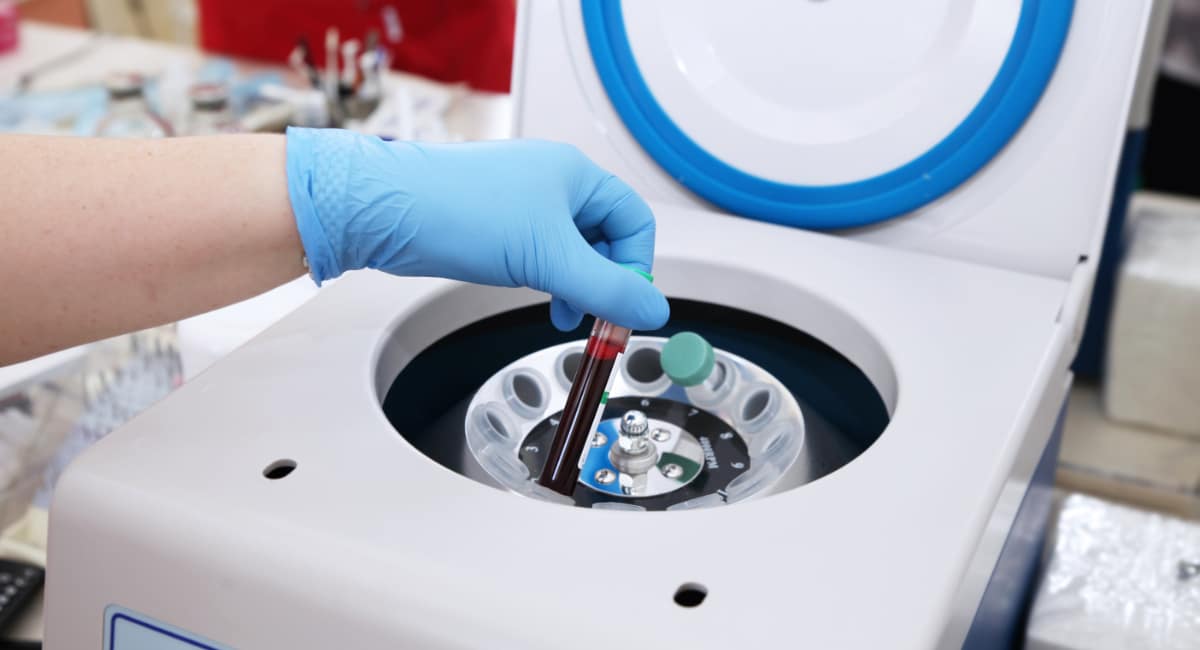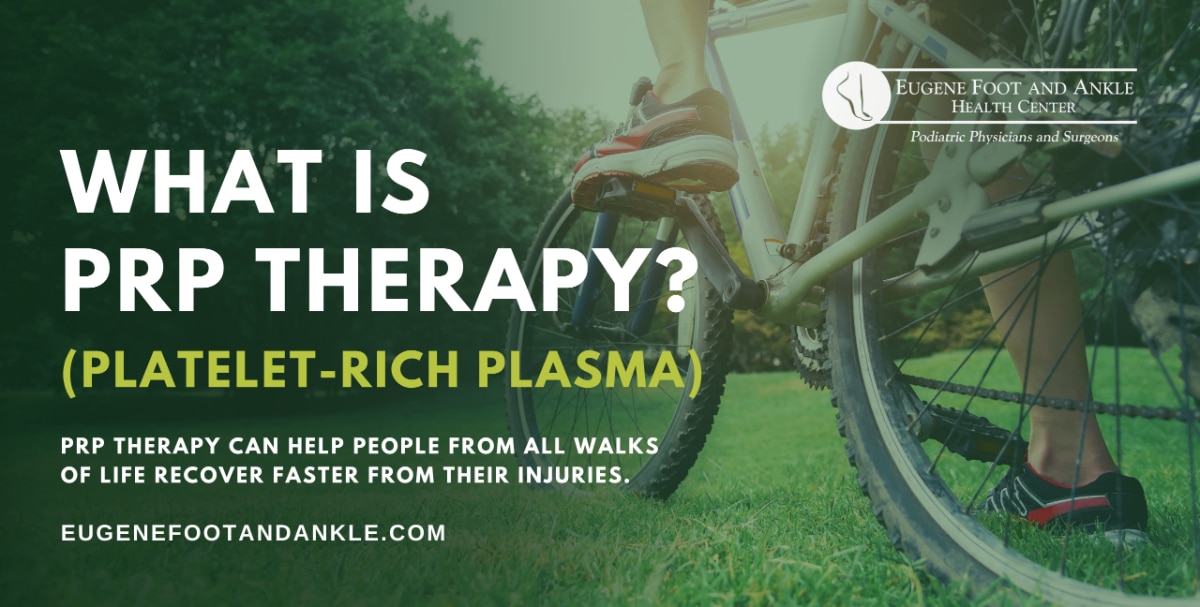What Is PRP Therapy? A Brief FAQ
If you’re a sports fan, you may have heard about a medical procedure called PRP therapy. It started gaining popularity with athletes in the late ‘90s, and continues to be used by them today. But how much do you really know about it—aside from the fact that it helped a few star athletes get back into playing shape weeks or even months ahead of schedule? Probably not a lot. So let us fill you in!
First of all, it’s important that you understand that PRP, short for platelet-rich plasma therapy, is not an expensive, complicated procedure that’s only accessible to millionaire celebrities. In fact, it’s a short, simple, safe, and affordable procedure that can help people from all walks of life recover faster from their injuries.
In fact, it’s one the many advanced treatments available at Eugene Foot and Ankle Health Center.
What Is PRP?
In short, PRP therapy is a treatment in which we prepare a special mixture of your own blood, then reinject it into your body right where a chronic soft tissue issue is causing you pain. Once there, the platelet-rich plasma provides key proteins and nutrients to the cells to reduce inflammation and accelerate the healing process.
In order to understand how it works, you need to know what platelets and plasma are.
- Platelets are small cellular fragments that make up less than 1 percent of your blood volume. Their primary biological role is clotting blood to stop bleeding, but they are also loaded with proteins (growth factors) that your body uses to repair damaged tissue.
- Plasma is simply the water-like fluid in which platelets and other blood cells “swim.” It makes up roughly half of your blood volume.
During the preparation of the PRP therapy sample, the concentration of platelets in the plasma is drastically increased. When the PRP is injected back into your body, your injured cells are quickly flooded with the kinds of nutrients they need to repair themselves.
What Conditions Can Be Treated by PRP?
PRP is typically recommended as a treatment option or addition for various types of soft tissue (muscle, ligament, tendon) injuries.
At our office, this most frequently includes two of the most common heel pain conditions—plantar fasciitis and Achilles tendinitis—as well as some forms of arthritis. However, it may also be used as part of a treatment course for a more substantial injury, such as a tendon tear.
PRP is often offered to patients who have not been having success with more traditional conservative treatments such as rest, stretching, and footwear modifications. It is also popular with athletes, active individuals, and those who work on their feet as a way to accelerate the full healing process and return to their activities more quickly.
How Is the Sample Prepared?
First, we draw a small sample of your blood.
Next, we place that sample into a centrifuge. This is a device that spins rapidly in order to separate a fluidic mixture (for example, blood) into its individual components, based on density. It takes your blood and divides into three groups: plasma, red blood cells, and “buffy coat” (which contains the platelets as well as white blood cells).
The red blood cells are removed, and the buffy coat is recombined with a portion of the remaining plasma to create a new mixture, made from your blood, that is highly concentrated in platelets.
No chemicals, medicines, or other materials are added to the sample at any point in the process. It really is just your own blood, except with the red blood cells removed and the concentration of platelets significantly increased.

What Can I Expect at My Appointment?
The whole appointment lasts 1-2 hours from start to finish. That includes all the necessary prep work, as well as a short time afterward in recovery.
Most people require only a single treatment session to produce the necessary results; however, more stubborn injuries may require up to 3 sessions provided within a 6-month period. You should experience little if any discomfort during the procedure, and no anesthetic is required.
There may be some mild soreness for a day or two afterward, but this is usually well controlled with over-the-counter pain medications. Mild nausea and dizziness are possible but relatively uncommon side effects, and should pass fairly quickly.
The treatment costs $500 per treatment site at our office.
What Kind of Results Can I Expect?
It’s important to understand that results will not be instantaneous. With a PRP therapy injection, you are beginning a biological process of healing that will require time—from a few days to a few weeks—for the full results to materialize.
However, it’s equally important to understand that, unlike a cortisone injection or taking painkillers, PRP therapy is not simply a mask for the pain. It’s helping you to heal by providing your body with what it needs to fight inflammation and restore itself. The relief you will eventually feel will be much more lasting and permanent.
Time and time again, we’ve seen patients who underwent PRP as part of their treatment plan make a complete recovery without requiring surgery, or significantly speed up the normal recovery timeline.
If PRP sounds like something that may be able to help you get over your foot or ankle pain and return to full activity more quickly, please give our office a call today. As we said, it’s just one of the many advanced treatment options we have here for our patients—so even if PRP isn’t the best choice for you right now, it’s highly likely we will have a different treatment option that will help.
You can reach our office in Eugene by dialing (541) 683-3351, or by requesting an appointment online.
Contact Us
Eugene
Hours:
Monday............ 8:00am - 5:00pm
Tuesday............ 8:00am - 5:00pm
Wednesday............ 8:00am - 5:00pm
Thursday............ 8:00am - 5:00pm
Friday............ 8:00am - 4:00pm (Only available on phones)
Closed for lunch from 12pm - 1pm and closed until 1:30pm on Tuesdays
© Copyright 2025 Eugene Foot and Ankle. All Rights Reserved. | Privacy Policy.


